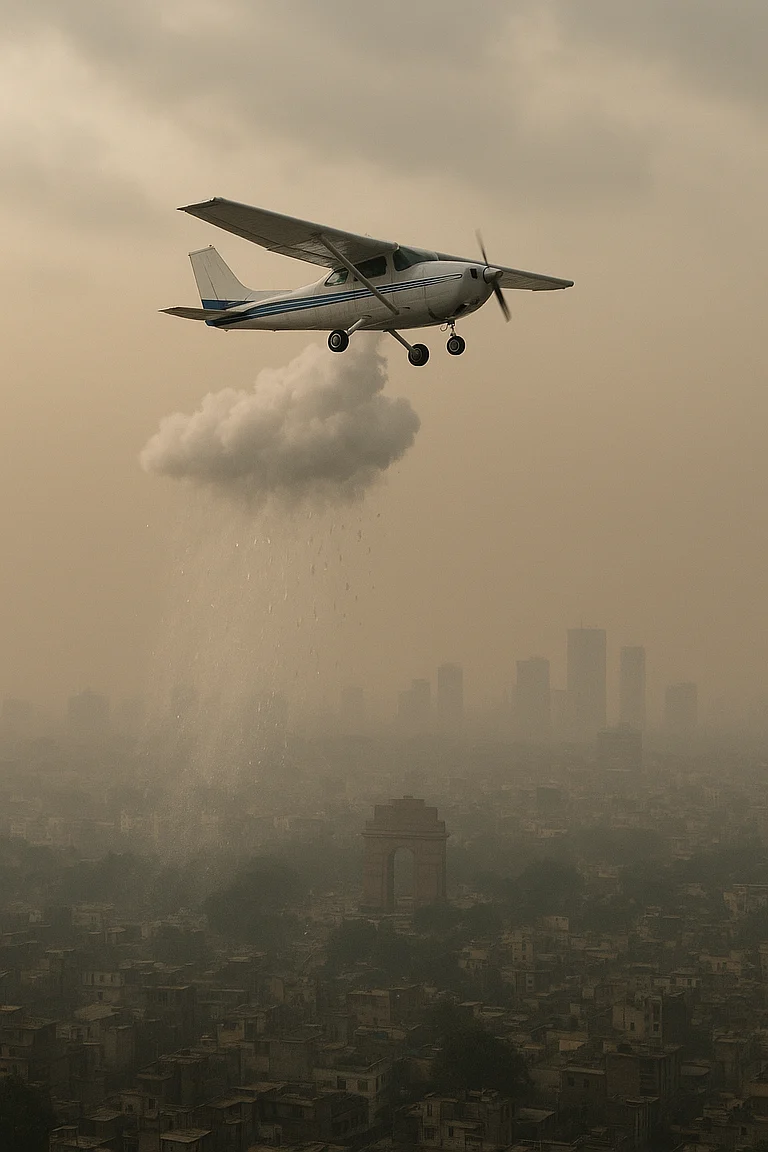Delhi conducts its first cloud seeding trial to test artificial rainfall readiness.
Full-scale operation expected between October 28–30 under IIT Kanpur supervision.
Experts say even mild showers can significantly cleanse Delhi’s polluted air.
Delhi Government Conducts First Cloud Seeding Trial, Full Operation Expected Between October 28-30
Delhi conducts cloud seeding trial, prepares to tackle rising air pollution
Delhi government successfully conducted its first cloud seeding trial flight, with flares fired between Khekra and Burari using advanced pyro techniques to test aircraft and equipment readiness. Delhi Environment Minister Manjinder Singh Sirsa, told The Hindu that the government is ready to conduct the cloud seeding operation between October 28 and 30.
The cloud-seeding experiment, which has been postponed several times since July, aims to induce artificial rainfall and could be viable solution to tackle air pollution in the national capital.
The experiment was originally scheduled for October 22 but it was postponed for next day because of insufficient cloud cover.
Preparing Skies for Rain
Nimbostratus clouds, which are necessary for cloud seeding, must have at least 50% moisture and have an elevation of 500–6,000 meters.
According to the experts cited by Moneycontrol, light rainfall can bring an improvement in Delhi’s air quality. Depending on how widespread and intense the rain is, the Air Quality Index (AQI) can drop by 50 to 80 points.
For the experiment, an aircraft fitted with cloud-seeding equipment for the artificial rain experiment was stationed in Meerut, under the supervision of a team from IIT Kanpur.
Last month, the Delhi government signed a Memorandum of Understanding (M0U) with IIT Kanpur for five cloud seeding trials, which are expected to be conducted in northwest Delhi.
The project was approved by 23 departments including the Directorate General of Civil Aviation (DGCA).
According to a DGCA order, the activity will be carried out under visual flight rules, without remuneration, and only after obtaining clearances from state and local authorities.
The cloud seeding operations are authorised between October 1 and November 30 and will follow strict safety, security, and air traffic control guidelines, it said.
Permission has been granted under Rule 26(2) of the Aircraft Rules, 1937, allowing IIT Kanpur's Department of Aerospace Engineering to conduct the activity using a Cessna 206-H aircraft (VT-IIT).
Subtle Shift in Pollutants
Meanwhile, there has been a subtle shift in the composition of pollutants that cloud its skies, according to HT. Through most of October, the Capital’s air has transformed, from being dominated by photochemical pollutants like ozone (O3) and carbon monoxide (CO) in the first 19 days to particulate matter (PM10 and PM2.5) in the past four days.
Experts told HT that the change indicates that there has been a sharp surge in combustion-driven emissions—primarily firecrackers, and aided by emissions from vehicles, industries and local burning.
“The first half of the month was dominated with some rain, but also ample sunshine. Gases like ozone form when combustion sources like vehicles and emissions from industries combine with volatile organic compounds under sunlight. If O3 and CO were lead pollutants, it means that the impact of external combustion sources was minimal,” Sunil Dahiya confirmed to HT, stating with rains stopping, the air has become drier and a drop in wind speed had led to accumulation of both local sources and cross-boundary emissions.
(With inputs from PTI.)

